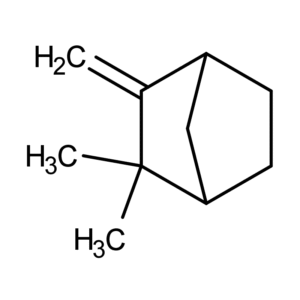Dipentene (1,8-terpene): full analysis of properties, uses and industrial applications
**
Dipentene, chemical name 1,8-terpene, English name Dipentene, CAS registration number 138-86-3, as a typical representative of monoterpenoid compounds, plays a key role in many fields such as chemical industry, medicine, and fragrance. From the fresh lemon aroma to complex industrial synthesis, dipentene has become an indispensable raw material in modern industry with its unique physical and chemical properties and wide application value.
1. Basic information and physical and chemical properties of dipentene
The molecular formula of dipentene is \(C_{10}H_{16}\), with a molecular weight of 136.23. There are three optical isomers: right-handed (d-dipentene), left-handed (l-dipentene) and racemic (dl-dipentene). At room temperature and pressure, it appears as a colorless to light yellow transparent liquid with a unique lemon-like aroma, which is also the origin of its nickname “limonene”. Its boiling point is between 176 and 178°C, its melting point is -74.3°C, its relative density (20°C) is between 0.840 and 0.880, and its refractive index (20°C) is 1.470 and 1.480. Dipentene is insoluble in water, but is completely miscible with organic solvents such as ethanol, ether, and chloroform. This solubility gives it a unique advantage in the field of solvents.
From a chemical point of view, dipentene has a high chemical activity due to the presence of carbon-carbon double bonds in its molecular structure, and can undergo a variety of chemical reactions. In the presence of metal catalysts such as nickel and palladium, it can react with hydrogen to produce para-alkanes; when in contact with strong oxidants such as ozone and potassium permanganate, an oxidation reaction will occur to produce products such as aldehydes, ketones or carboxylic acids. These characteristics provide a broad space for its application in chemical synthesis.
2. Source and production process of dipentene
Dipentene mainly comes from natural essential oils. Lemon oil, orange oil, citronella oil, turpentine and other plant extracts are important sources. The content of dipentene in lemon oil and orange oil is particularly prominent, reaching more than 90%. In industry, dipentene is mainly produced through two methods: extraction and synthesis.
The extraction method is the mainstream method of industrial production at present. Its principle is to use the difference in boiling points between dipentene and other components in natural essential oils to achieve separation through distillation process. Taking turpentine as an example, after pretreatment, it enters the distillation tower. Under the condition of precise control of temperature and pressure, dipentene is distilled from the top of the tower, and then further refined and purified to obtain a high-purity product. The synthesis method uses small molecules such as isoprene as raw materials to prepare dipentene through polymerization reaction, but due to its high cost and complex process, it has not yet been widely used.
3. Wide application areas of dipentene
(I) Flavor industry: giving products a fresh aroma
In the flavor industry, dipentene has become the core raw material for blending lemon, citrus and other flavor essences with its natural and fresh lemon aroma. In the food and beverage industry, whether it is carbonated beverages, fruit juice drinks, or candies and baked goods, adding dipentene can significantly enhance the flavor of the product, and it also has a certain antiseptic and fresh-keeping effect. According to statistics, the annual demand for dipentene-based essences in the global food flavor market exceeds 100,000 tons. In the field of daily chemicals, the natural aroma created by dipentene in products such as perfumes, air fresheners, and toiletries is deeply loved by consumers.
(II) Pharmaceutical field: potential health value
Dipentene also performs well in the pharmaceutical field. On the one hand, it is an excellent solvent for pharmaceutical preparations, which can effectively improve the solubility and bioavailability of poorly soluble drugs. For example, in capsules or oral liquid preparations of certain fat-soluble drugs, dipentene as a solvent can promote the absorption of drugs in the body. On the other hand, a large number of studies have shown that dipentene has pharmacological activities such as anti-inflammatory, antibacterial, and antioxidant. Laboratory studies have found that dipentene has a certain inhibitory effect on common pathogens such as Staphylococcus aureus and Escherichia coli, which makes it have broad prospects in the development of natural antibacterial drugs and health products.
(III) Chemical Industry: Multifunctional Raw Materials and Solvents
In the chemical industry, dipentene is an important raw material for synthetic resins, rubbers, coatings and other products. Resins synthesized with dipentene as a monomer have excellent weather resistance, chemical corrosion resistance and mechanical properties, and are widely used in automotive coatings, ship coatings and other fields. At the same time, dipentene can also be used as an environmentally friendly solvent to replace some traditional organic solvents and reduce the emission of volatile organic compounds (VOCs), which is in line with the current development trend of green chemical industry. In the production of adhesives, the use of dipentene as a solvent can improve the flexibility and adhesion of adhesives.
IV. Safety and Storage Precautions of Dipentene
Although dipentene is generally considered a safe food additive and flavoring ingredient, it still needs to be used and stored with caution. Due to its volatility and flammability, it should be stored in a cool, ventilated warehouse, away from fire and heat sources, and separated from oxidants and acids. In production operations, necessary protective measures must be taken, such as wearing protective gloves and goggles, avoiding direct contact with the skin and eyes, and preventing irritation.
With the advancement of global green chemistry and sustainable development concepts, dipentene, as a natural renewable resource, will have a broader application prospect. In the future, with the optimization of extraction processes and the development of new application fields, dipentene is expected to play a greater role in more industries, injecting new impetus into industrial development and the improvement of quality of life.
This article systematically presents the knowledge related to dipentene. If you want to add or subtract some content, adjust the details, or have other modification ideas, please feel free to say it.




